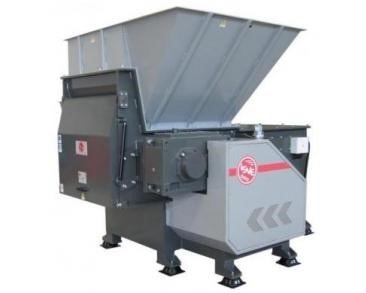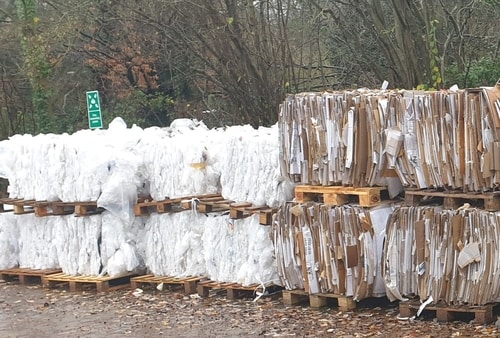

Part reduction relates to the breaking down of scrap plastic components into smaller parts. This may be to reduce the volume of the items or to allow the material to be reprocessed.

Shredders are generally used to break down large items such as film bales, plastic purgings, automotive bumpers, pipes, profiles and even voluminous parts such as bins. Items are fed into a large hopper and drawn through the equipment by one or two rotating shafts. To reprocess the shredded material, it may first have to be granulated.
Granulators are used for reducing the size of plastic waste such as runner systems, smaller scrap components or pre-shredded material. This allows for the resulting plastic flake to be readily reprocessed.
Beside-the-press models are smaller units that can be located next to a processing machine, to be fed a runner system by a robot or sprue picker. The granulated material can then be fed back into the machine in a closed-loop system. Rotor type granulators operate at lower speeds and make less noise than ‘flying blade’ style units, so are better suited for this type of application.
Centralised processing systems are larger granulators that can be used to meet the needs of a whole factory, as they can process larger items in higher volumes. These centralised systems tend to be isolated from the rest of the production area, as noise levels can be high. A sizing grid (mesh) is used to make sure that the flake produced is below a specified size.
Units can usually be supplied with soundproofing enclosures and additional auxiliary items such as:
Edge trim granulators are specialised units designed to run continuously in conjunction with a plastic sheet extrusion line. Trim from one or both sheet edges is guided through adjustable rollers into the granulator.
Once processed, the resultant regrind is typically fed directly back into the production line (closed-loop).
Thermoforming granulators are used in conjunction with fully automated thermoforming lines, processing the skeletal waste produced by the process. During the startup process, the granulator is fed a full sheet of material.
The unit can be positioned either in-line with the processing machine, below the machine within the support frame, or in a pit, if the granulator is too large to fit within the frame. Rollers or other traction devices are used to guide and pull skeletal waste into the granulator.
De-dusting & separation equipment is used for separating light impurities or dust from re-processed material or granulated plastic. This is usually achieved during the conveying of material from granulators or shredders to storage.

Image courtesy of Compact and Bale Ltd.
Waste Balers are hydraulically powered units that crush materials within a chamber. The compaction of the material can significantly reduce its volume, making it easier to store and transport. In some cases, a volume reduction of up to 90% can be achieved.
Although Balers can help to reduce the volume of refuse destined for landfill, within the Plastics Sector, their primary function is to aid in the recycling of plastic scrap and cardboard. Both these commodities have value when sold to a specialist recycling company, so making them easier to store, handle and transport is good practice.
Balers vary significantly in their size and compacting power. The power of the hydraulic ‘press’ within a unit is measured in metric tonnes of force. In essence, the higher the force applied per unit of surface area (e.g., per cm²), the more compact and dense the resulting bale of material will be.
Lower tonnage models are ideal for cardboard and flexible plastic packaging materials such as film. If rigid plastics are to be processed, then a higher tonnage unit will need to be specified.
The most attractive format of bale for re-processors is the Mill Size Bale. This has the optimum size and density for transportation and handling. Some models of Waste Baler are called Mill Size Balers.
The advantages of converting plastic and cardboard waste into bales include:

Image courtesy of Compact and Bale Ltd.
- A 65tonne horizontal waste baler
capable of producing bales weighing
around 750kg.
Waste Balers have two basic designs: Vertical and Horizontal models. Vertical units are the most popular in a typical manufacturing or retail environment, as they take up less floor space. They are typically manually front-loaded. Horizontal models can be loaded by tipping material directly into the compacting chamber. They tend to provide higher material throughputs and a greater degree of compaction.
Depending on the intended throughput, Waste Balers can be offered with a degree of automation. Options include automated tieing and bale ejection, as well as feed systems such as inclined conveyors.